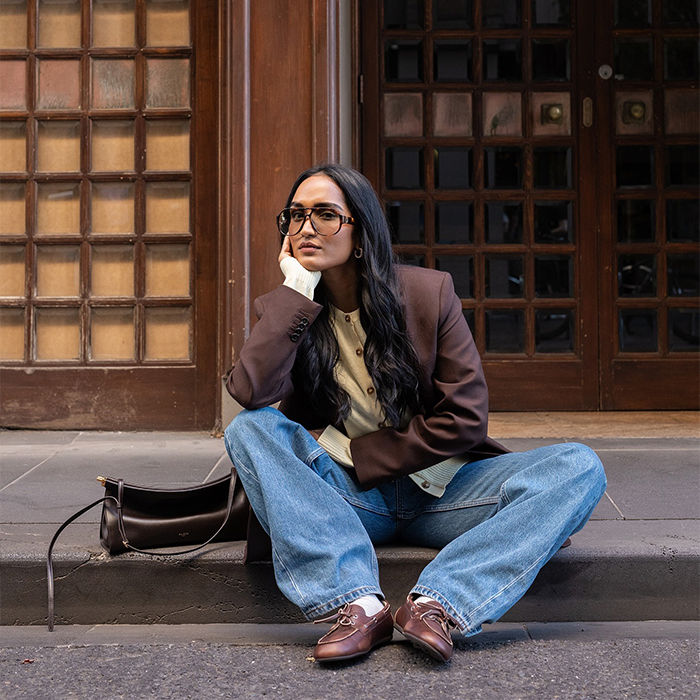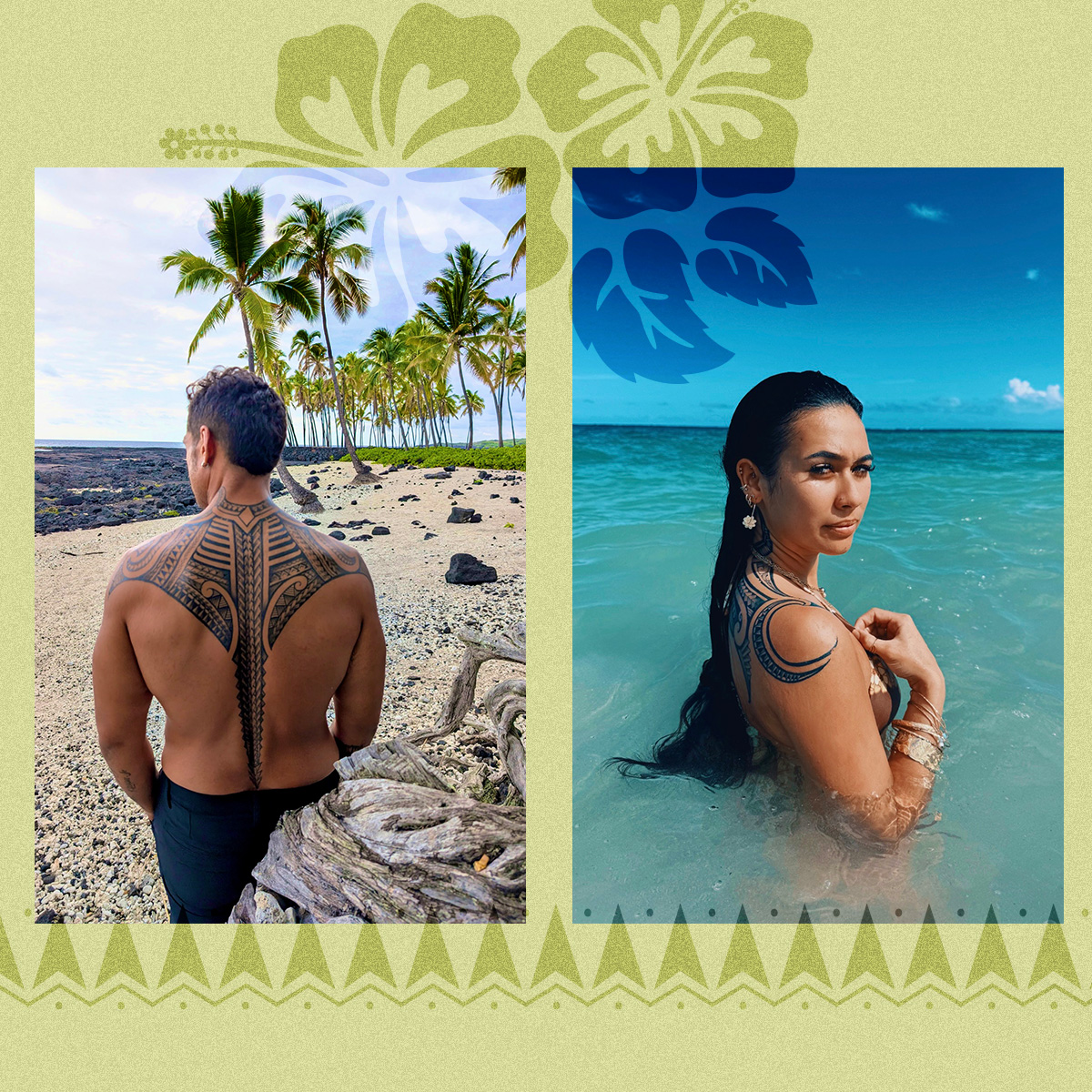I'm Two Sessions Into My Tattoo-Removal Journey—Here's Everything I Want You to Know
One editor gives us an inside look at the tattoo-removal process.

Grace Lindsay
Here at Who What Wear UK, we like to test as many trending beauty treatments as possible, from the best facials to microneedling, to let you know if they are worth the hype. However, we also want to ensure we are testing treatments that, although not the most exciting, are things that people actually want to read about. One of those things? Tattoo Removal. Who What Wear UK data analyst, Sophie Cookson, was keen to get a tattoo removed, so she headed to The Aesthetics Doctor in Mayfair to start her treatment.
Sophie is now two months into the tattoo removal process, and has shared her entire experience below, including before-and-after pictures. We've also answered some of your most burning questions about tattoo removal, so keep on scrolling for everything we want you to know.
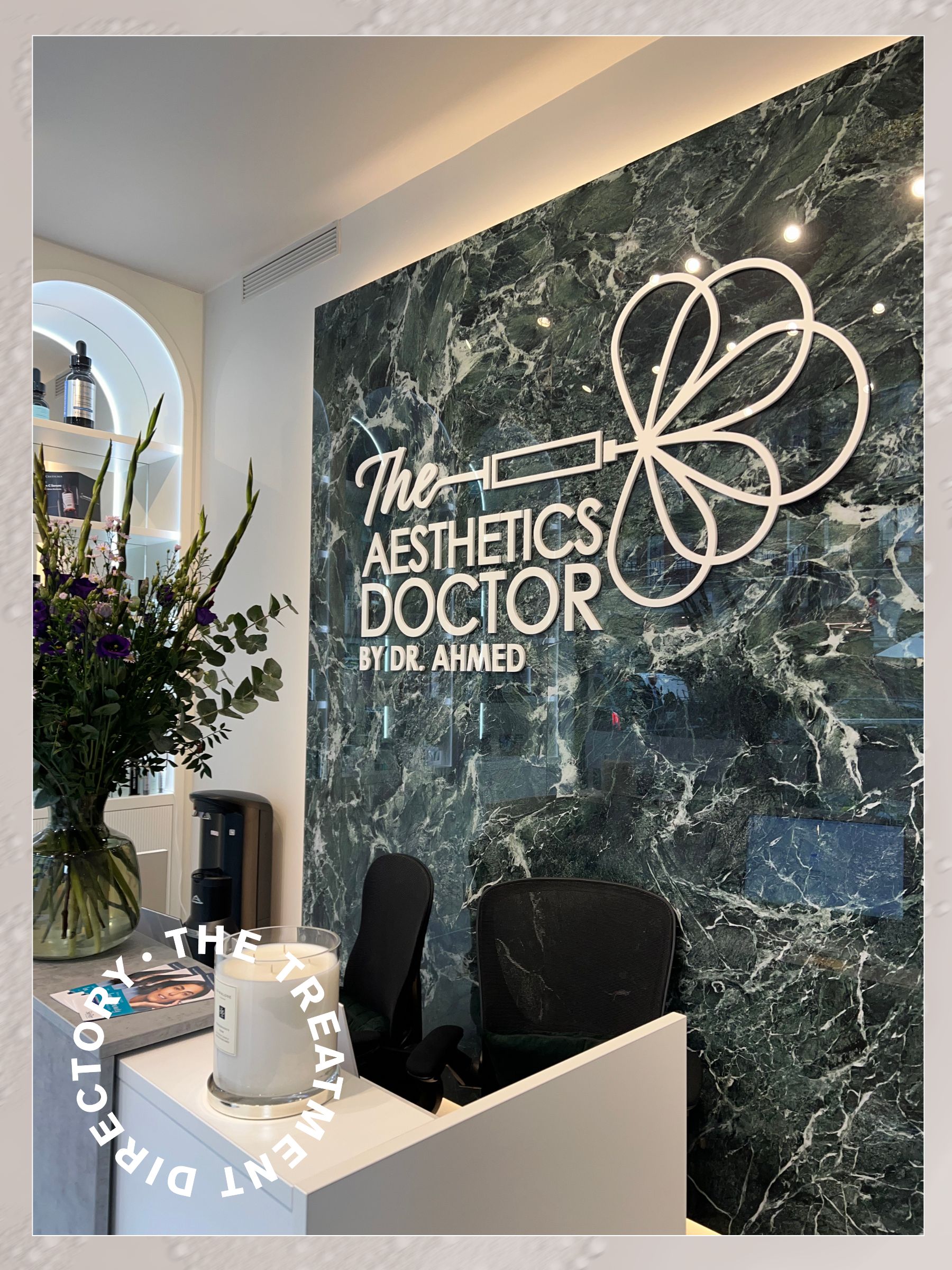
How Does Tattoo Removal Work?
First things first, how does tattoo removal actually work? Most practitioners will use lasers in order to carry out this treatment. "The laser emits very short pulses of light that essentially break the pigment in the tattoo," explains Dr Ahmed El Muntasar, GP, cosmetic doctor and award-winning practitioner. "When the pigment particles break down and become smaller, your immune system is able to clear them."
Is Tattoo Removal Painful?
The question we get asked all the time is, "Is tattoo removal painful?" The truth is, this really depends on the individual. "You can use numbing cream or cooling devices, but it's generally quite well tolerated," says Dr El Muntasar. That being said, he does tell me that some people can find it a little sensitive, especially if they are getting a tattoo completely removed. If you're nervous about the treatment, make sure to discuss any concerns with your practitioner.

Is There Any Downtime After the Treatment?
The good thing about this treatment is that there isn't too much downtime. "A bit of swelling, redness, or blistering can happen for a few days," explains Dr El Muntasar. "It might be a bit sensitive to light, but nothing major."
Will Your Tattoo Be Completely Removed?
Whilst many tattoos can be completely removed after undergoing this treatment, the outcome depends on several factors, so it's important to discuss the expected results with your practitioner before proceeding with the treatment. "[Tattoos] can be significantly faded or even completely removed, depending on a few different factors such as the colour (coloured tattoos, especially green and yellow, are quite difficult) and the age of the tattoo," Dr El Muntasar tells me.
He also tells me that it can depend on the patient's skin colour and how they heal. "Generally, to get [the tattoo] completely removed, you will probably need around 10 sessions."
Tattoo Removal Review
Let me give you a brief backstory. When I was 18 years old and travelling around Thailand, I decided it was the perfect time to get a small tattoo, and had an arrow tattooed right down the middle of my left arm. When my mum told me that she was upset and that I might want it removed in the future, I didn't listen or believe her. Fast forward 12 years, and I do, in fact, regret the positioning of the tattoo and the fact that it wasn’t exactly an original choice. As I enter into a new decade, I thought now was the right time to get rid of it once and for all.
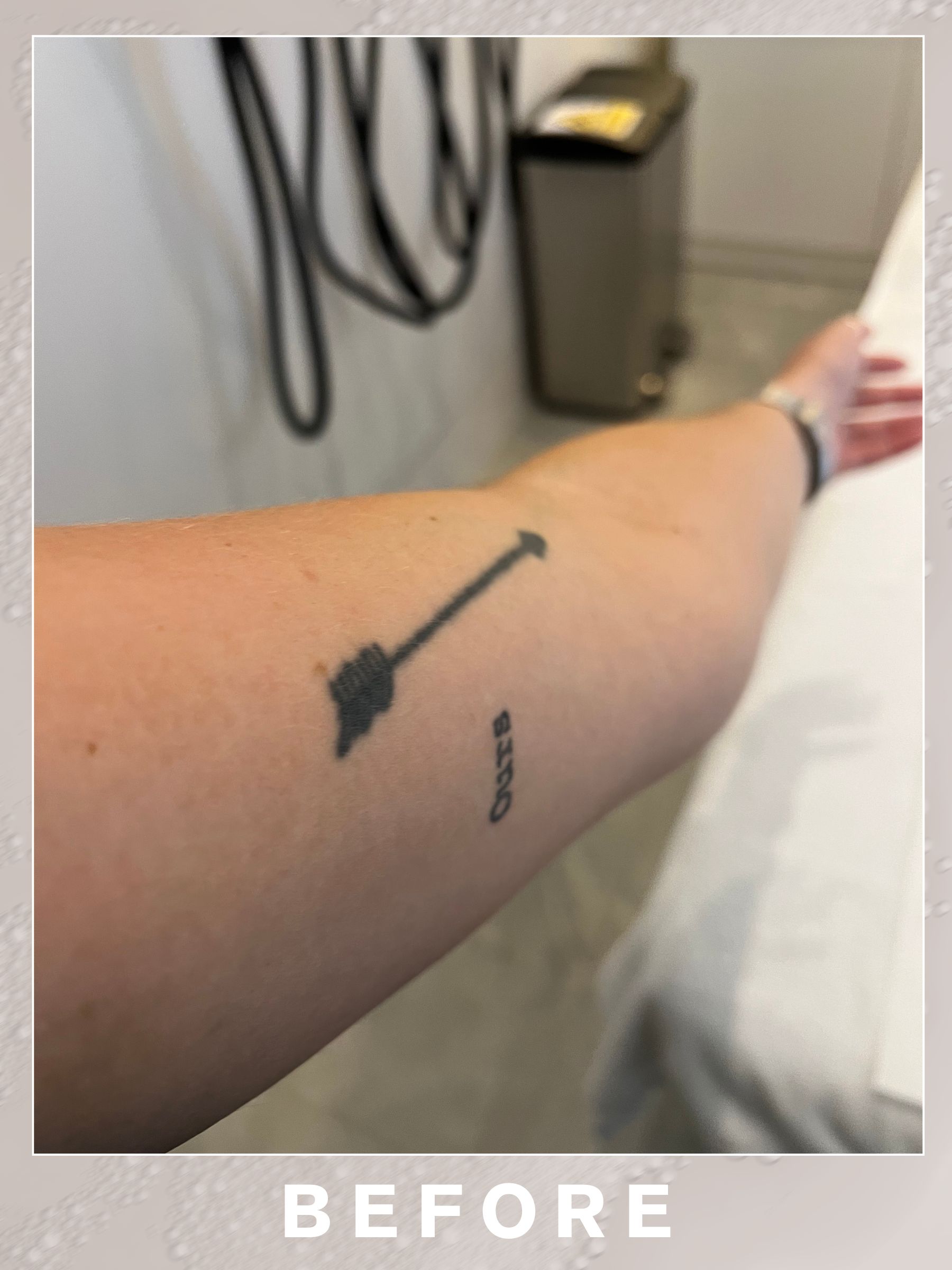
I visited The Aesthetics Doctor, located in the middle of Mayfair. The clinic had a really calming atmosphere and a gorgeous setup. I had an initial consultation with a woman named Lissandra, who was very kind and thoroughly explained what would happen over the course of my treatment. (She even followed up with me after the appointment to make sure that it was healing correctly.)
After my consultation, it was time to come back for my first session. The whole process was extremely quick; my tattoo is around 10cm long, and it took just under two minutes for the laser to cover the entire section. I have quite a high pain threshold, but I was a bit nervous; however, I didn't need to worry. The Alma Harmony machine had a cooling function, so all I could feel was a pinching-like sensation (a bit like getting laser hair removal). Plus, you can see the skin change colour as soon as the laser touches it, so you know it's really working.
I am a bit of a bruiser, but I didn’t expect to see as much bruising around the tattoo as I did. It lasted around a week, but I applied some Arnica Cream, which seemed to help. The tattoo itself needed to be moisturised too to prevent it from drying out and flaking, as I was told that this would be bad for the healing process. It's worth noting that you should also avoid exposing the tattoo to sunlight for a few weeks after the treatment (always check the recommended time with your practitioner), so I'm glad that I chose to do it in the autumn.
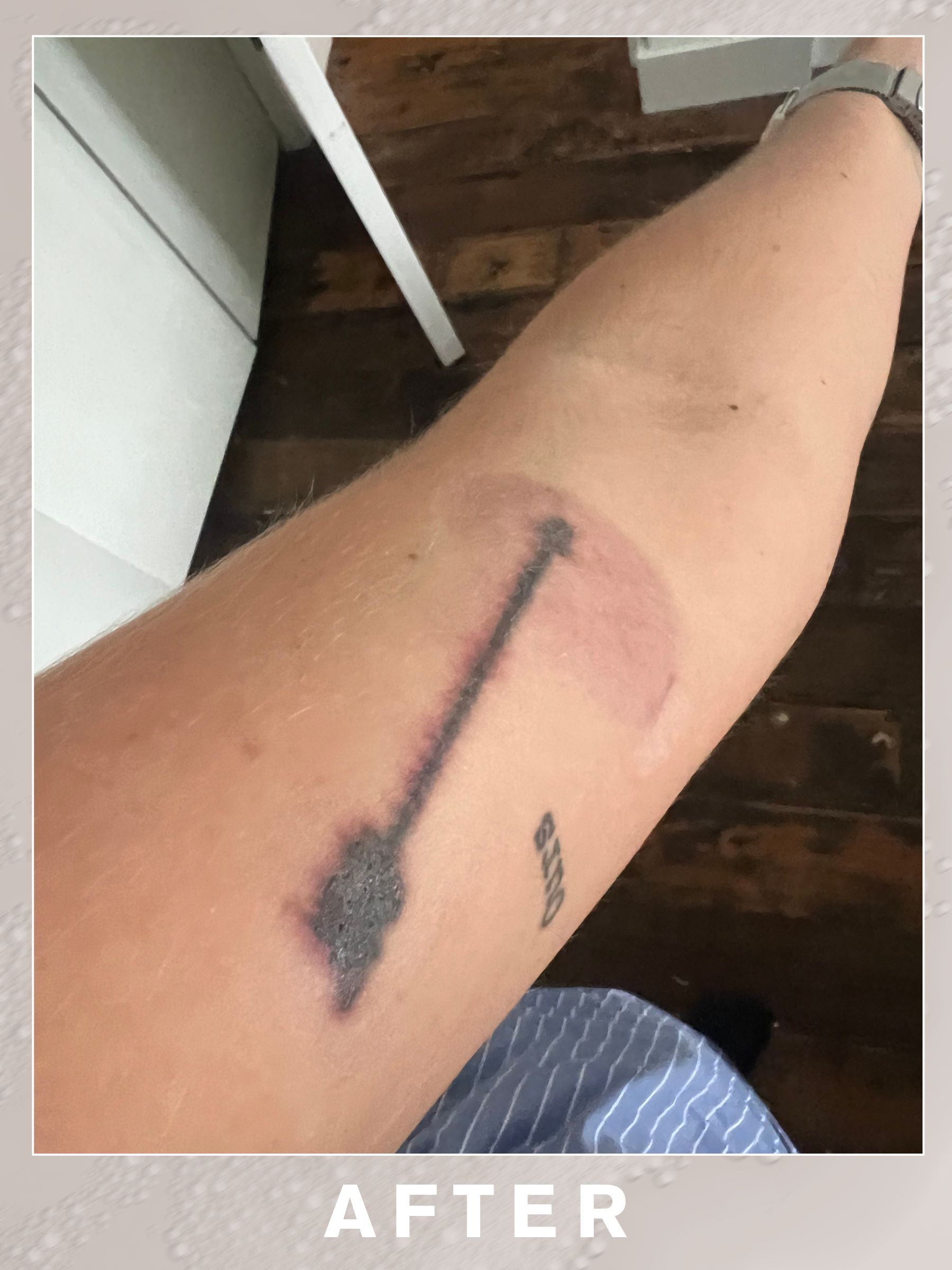
After one session, I noticed that the tattoo had lightened in colour, and it also became more blurry as the weeks went on.
I was apprehensive ahead of my second appointment, as I had heard that it can be more painful with each session, but I was pleasantly surprised. It didn't feel much worse, and it was over just as quickly as the first one had been.
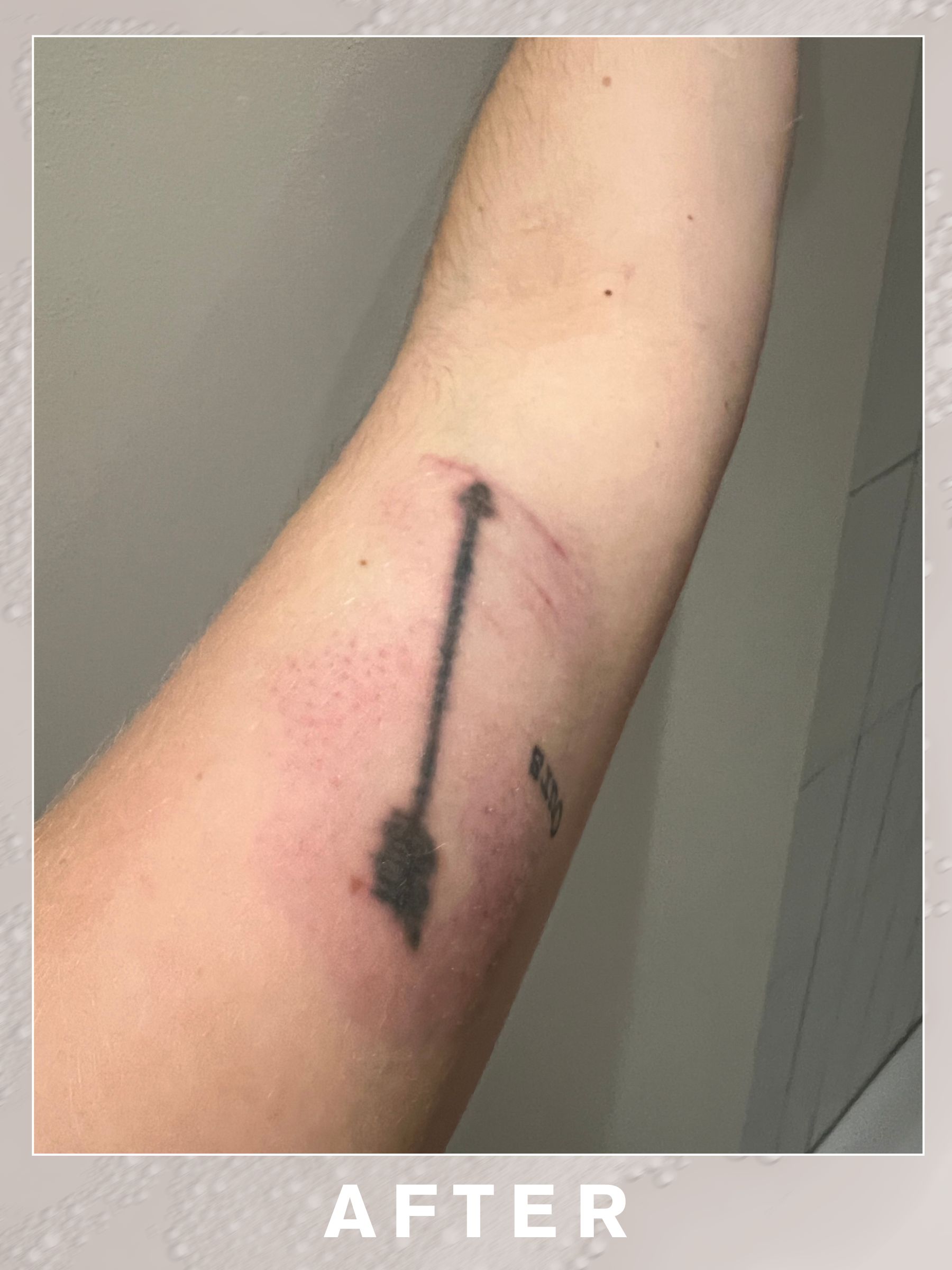
I did experience some bruising, but it was nowhere near as bad as last time. I have to wait three months for my next session, so that the body can take the time to break down the particles, so I will report back when that time comes!
Book an appointment with Dr Ahmed El Muntasar at The Aesthetics Doctor.
Opening image: @amaka.hamelijnck
- Grace LindsayJunior Beauty Editor
